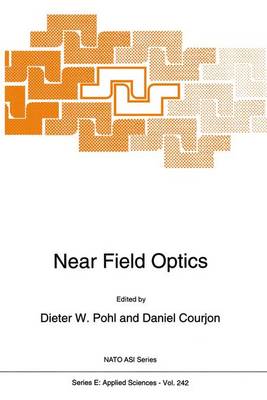Nato Science Series E:
1 primary work
Book 242
Near Field Optics
Published 31 July 1993
Scanning near-field optical microscopy (SNOM, also known as NSOM) is a new local probe technique with a resolving power of 10--50 nm. Not being limited by diffraction, near-field optics (NFO) opens new perspectives for optical characterization and the understanding of optical phenomena, in particular in biology, microelectronics and materials science.
SNOM, after first demonstrations in '83/'84, has undergone a rapid development in the past two to four years. The increased interest has been largely stimulated by the wealth of optical properties that can be investigated and the growing importance of characterization on the nanometer scale in general. Examples include the use of fluorescence, birefrigence and plasmon effects for applications in particular in biology, microelectronics and materials science, to name just a few.
This volume emerged from the first international meeting devoted exclusively to NFO, and comprises a complete survey of the 1992 activities in the field, in particular the variety of instrumental techniques that are currently being explored, the demonstration of the imaging capabilities as well as theoretical interpretations - a highly nontrivial task. The comprehensive collection of papers devoted to these and related subjects make the book a valuable tool for anybody interested in near-field optics.
SNOM, after first demonstrations in '83/'84, has undergone a rapid development in the past two to four years. The increased interest has been largely stimulated by the wealth of optical properties that can be investigated and the growing importance of characterization on the nanometer scale in general. Examples include the use of fluorescence, birefrigence and plasmon effects for applications in particular in biology, microelectronics and materials science, to name just a few.
This volume emerged from the first international meeting devoted exclusively to NFO, and comprises a complete survey of the 1992 activities in the field, in particular the variety of instrumental techniques that are currently being explored, the demonstration of the imaging capabilities as well as theoretical interpretations - a highly nontrivial task. The comprehensive collection of papers devoted to these and related subjects make the book a valuable tool for anybody interested in near-field optics.
